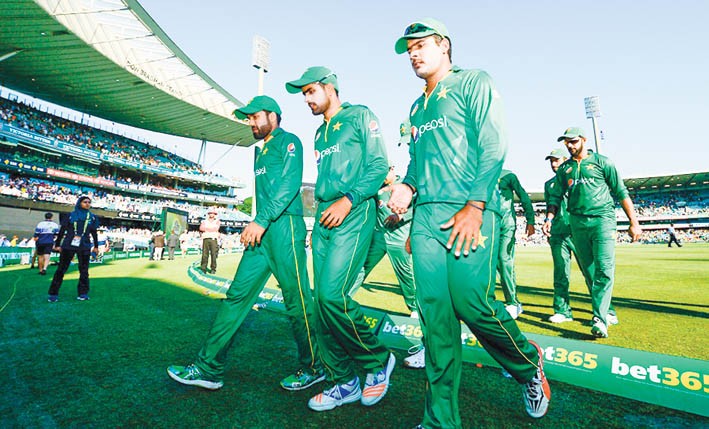
It’s the entire sports edifice that has fallen apart because of the lack of a holistic, systematic and scientific approach towards sports development

When Pakistan’s cricket team was leaving for New Zealand and Australia tour, many friends asked me to predict the outcome. I kept quiet because my pessimism or realistic outlook is not liked by most of my friends. My only remark was that in New Zealand the cricket ball seams and in Australia it bounces a lot and both conditions are not to the liking of the Asian Tigers.
The results were obvious and disappointing, giving opponents the opportunity to bash captain, coach, players, selectors, team management and PCB officials. Yes, to some extent they are all responsible for the downfall of cricket in Pakistan. But is it Cricket only that faces this ill fate? It’s the entire sports edifice that has fallen apart because of the lack of a holistic, systematic and scientific approach towards sports development.
In Pakistan we talk of "hidden talent" and skills of the youth but we don’t realise that our skillful young players simply fail to deliver under pressure in international competitions because they are not a product of a system.
The sports gurus in Pakistan attribute this failure to lack of international experience of our players. They are right to some extent when they attribute the failure to lack of finances and shortage of equipment, opportunity and the technological edge that our adversaries mostly enjoy.
But research exposes several basic areas where attention and investment can produce good and sustainable results in creating pathways for professional sports culture in Pakistan without spending huge funds.
It has been observed worldwide that all world class athletes and performers have well developed motor and life skills. These include body balance, hand-eye coordination, footwork, etc. These are developed at an early stage of life and when the child is seven or eight years old, his motor skills are already developed. As there is hardly any focus on motor skill development among the children in formidable years, our future champions grow up with inadequate or improper motor skills.
By the time a child picks up interest in sports activities he is already eight to ten years of age, when life skill development factor should be supplemented with motor skill development and participation in general sports.
By the time a child reaches adolescence age, 14 to 15 years, his interest in a particular sport is crystalised. This is the time when specialised and focused training and coaching should be imparted to develop correct fundamental skills and physical conditions to take strides in sports at national and international levels.
The player is then ready to take off and participate in different competitions from age 18 onwards. Unfortunately, these pathways don’t exist in our system and most of the children pick up interest in sports without necessary motor and life skills development. This is the reason that despite investing heavily in their sport-specific skills at the later stage they fail to deliver at international level under pressure because the opponents are a product of a proper sports system.
A myth that I would briefly like to touch is the availability of finances for sport development. No doubt money makes the mare go, but you would be amazed to see a recently published study of Rio Olympics, where developing or least developed countries like Kenya and Ethiopia won several medals despite ranking below the global HDI average.
With a high count of medals-per-athlete, these nations illustrate that in cases where resources are limited, investing in fewer, more promising athletes can be effective.
Pakistan did send a small contingent to Rio Olympics, but the entire exercise was merely a joy trip.
This study available at http://neo-assets.s3.amazonaus.com offers sports fans, statisticians, managers and planners alike a quadrennial opportunity to dive into a rich set of data to analyse the fortunes of nations based on their athletic achievements. Which countries exceeded expectations? How does economic growth affect a country’s gold medal count? If the sports experts of developing countries like Pakistan take pains to view the website http://neo-assets.s3.amazonaus.com/news/LMI-LI-updated.png .prg they can learn a lot from this amazing study.
Perplexed with the ongoing state of sports in the country the Punjab Government is undertaking a provincial sports talent hunt programme.
This fallacy may have been adopted in line with the Lahore Qalandar’s talent hunt or copied from some neighbouring country. But as mentioned before the exercise will be counter-productive because we are trying to erect castle in the haste without any foundations. The entire exercise of talent hunt will only provide a few retired sportsmen with lucrative jobs. There will be no result at the end.
There is no shortcut to excellence in international sports. Pakistan will remain behind unless we adopt a proper system, whereby sports are prioritised, strengthened and applied in education institutions and clubs, sportspersons are offered well defined pathways so that sports are taken seriously as a profession.